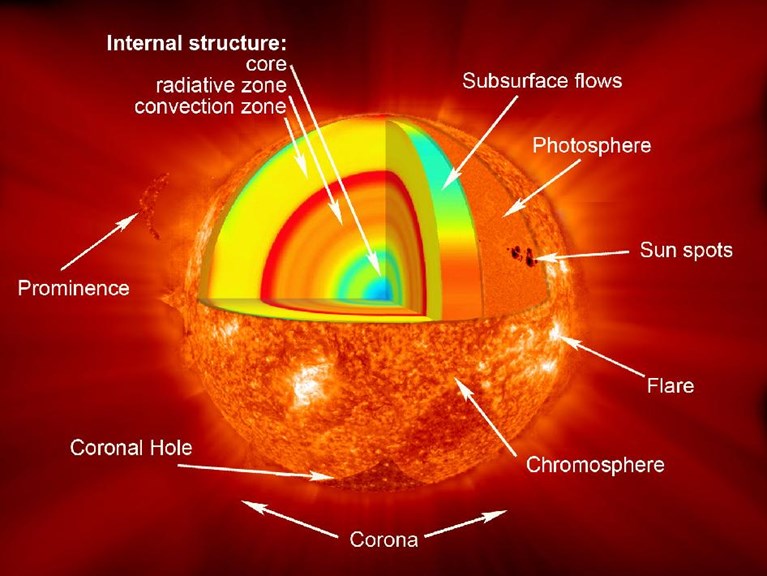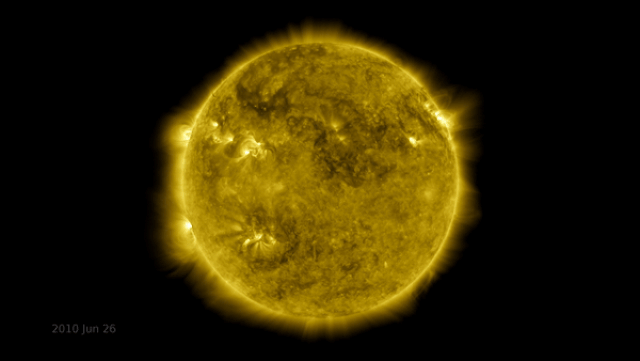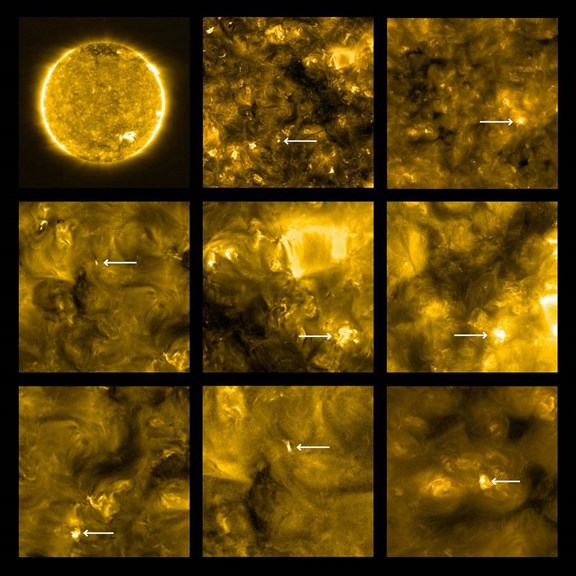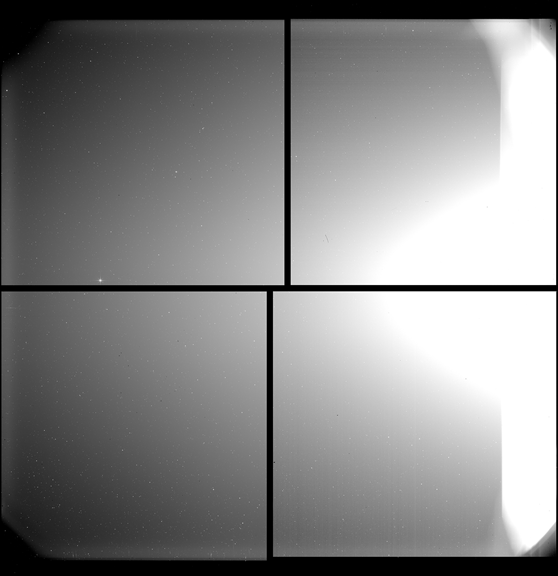The Sun like you’ve never seen before
From the depths of mid-winter in the southern hemisphere here are some (warming) facts and images about the source of all our heat and light, the Sun. Two amazing spacecraft are up close teasing out it secrets, but first some context...
Quick Sun facts
- It’s 150 million km away and made of 71% hydrogen, 27% helium, very small amounts of Oxygen, Carbon and Silicon, and tiny traces of some other heavier chemical elements.
- It’s basically a sphere of hot plasma a little wider around its middle and rotates once every 27 days overall (although the equator is faster at 24 days compared to the polar regions at 30 days).
- It’s 1.4 million km in diameter and 109 Earths could fit across its width.
- It contains 99.86% of all the mass in the solar system and is 333,000 times as massive as the Earth.
- It has a surface temperature of 5,700 K (5,500 C) and a powerful magnetic field.
- The sun emits in all directions a stream of photons of visible light and ultraviolet and infrared energy, plus x-rays and gamma rays from solar flares, as well a constant solar wind of subatomic particles like protons and electrons.
- It also has pressure waves and low frequency sound waves moving at thousands of kilometres per hour with wavelengths hundreds of kilometres long.
- It is a Yellow Dwarf star 4.6 billion years old about half-way through its life.
But how does it do it all?
The Power of the Sun
Like all stars our sun maintains an extraordinary balancing act between competing forces. From an initial collapsing and contracting cloud of gas and dust a critical phase was reached and our sun was born. In the centre under high pressure and temperature a nuclear furnace began to rage with hydrogen fusing to form helium, a process that releases energy as a by-product.
Einstein’s famous equation E=mc2 expresses this as an equivalence or relationship between energy ‘E’ and matter ‘m’ (with the multiplication factor ‘c’ being the speed of light squared - a truly huge number). Matter and energy are like two sides of same coin. You could say matter is a tight bundle of condensed energy. Under the right conditions that matter can be converted into a very great deal of energy. That’s the source of the sun’s power.
The centre of our sun is perfect for this steady release of energy with temperatures of 15 million degrees and extreme pressure that started and then continue the process. The energy makes a long slow journey as it radiates outward from the core and then by convection eventually reaches the surface.
This process or balancing act is between nuclear fusion in the core generating an outward pressure of radiation (an explosion, you might say, trying to blow up the sun) versus the inward force of gravity (attempting to collapse the sun due to its immense mass). It was an extraordinary realisation for astronomers and physicists early last century when this secret was finally revealed and understood, that this is how our sun and other stars sustain themselves. And they do so for billions of years for as long as they have hydrogen to fuse.

Close up with the Sun
There are several missions studying our local star but two are our focus here; NASA’s Solar Dynamics Observatory (SDO) and the ultra-close ESA/NASA Solar Orbiter.
A recent highlight from SDO’s ongoing study is a recently released 10-year time lapse video of the sun taken in extreme ultraviolet wavelength. It comprises photos taken every hour for ten years condensed into an hour with music by Lars Leonhard. The video reveals a broiling, churning, dynamic granular surface with abundant solar flare activity, filaments of plasma drawn out along magnetic field lines, associated sun spots, and a wispy outer atmosphere or corona.
And from Solar Orbiter two months ago we gained the closest view of the sun ever taken, including numerous small bright hot spots like mini-solar flares dubbed ‘campfires’ in the upper surface, stunning images in other wavelengths which offer other insights into what’s happening, and also a remarkable image of Zodiacal light which reveals space dust subtly lit by sunlight (with little Mercury captured too!).


